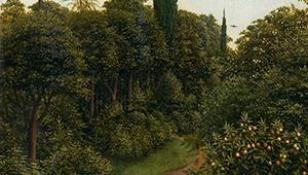This archived website 'Flemish primitives' is temporarily not being updated. Certain functionality (e.g. specific searches in the collection) may no longer be available. News updates about the Flemish primitives will appear on vlaamsekunstcollectie.be. Questions about this website? Please contact us at info@vlaamsekunstcollectie.be.
Exhibition 'From tree trunk to altarpiece'
The Ghent altarpiece was painted by the Van Eyck brothers and was completed in 1432. The oak used for the panels that make up the polyptych comes from the area around the Baltic Sea. The first part of the exhibition focuses on its long journey: the felling and transportation of the original tree trunks, how the wood was cut into planks and the tools used to do so. In other words, it gives us an insight into medieval craftsmanship.
Over their long history, the wooden panels and frames have been repeatedly disassembled, moved around, sawn through and had their shape changed and this has left traces behind in the wood. There are several hypotheses concerning the original configuration of the altarpiece when it was first installed in the Vijd chapel. These can be documented, not only through the evidence left in the architecture, but also by examining the panels and frames themselves. The second part of the exhibition deals with these historical reconstructions.
The third section explains how dendrochronological analysis, which examines the growth rings on the planks, makes it possible for us to establish when the trees were felled and whether some planks were from the same tree.
This interdisciplinary research project provides vital evidence relating to the debate on the key questions: "which of the Van Eyck brothers did what and can we date these interventions?"
The information presented in the exhibition was compiled by Dr. Annick Born of the University of Ghent.
Exhibition From tree trunk to altarpiece
Through June 28 2015
Caermersklooster Ghent
(News item November 6 2014)







